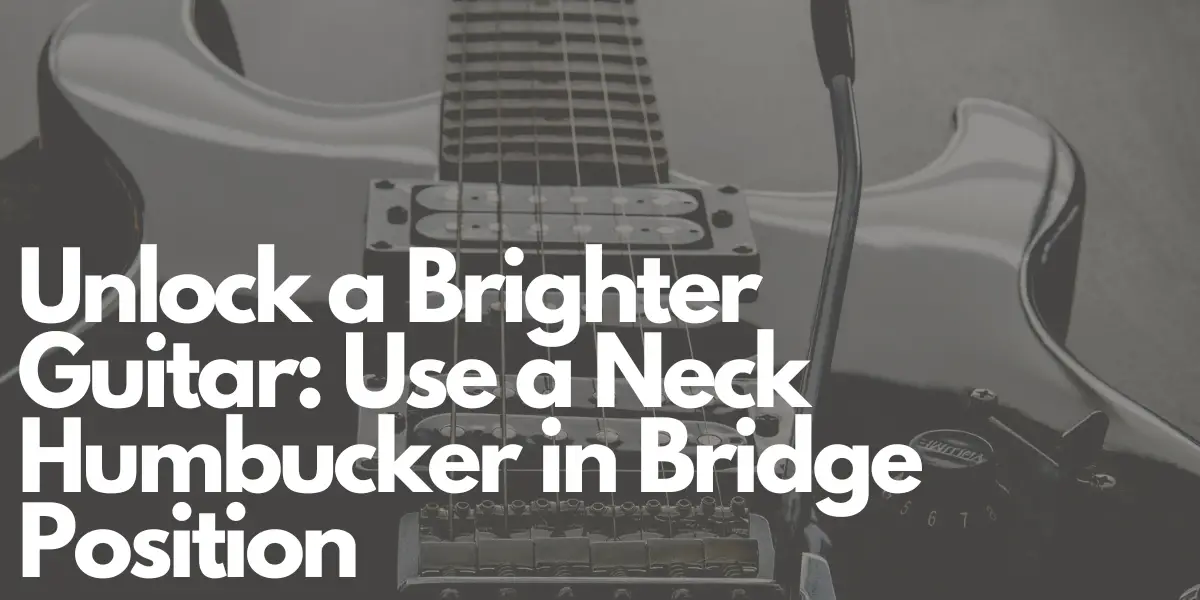Guitarists are always on the lookout for ways to tweak their instrument’s sound, seeking unique tones and textures that set them apart. One popular modification that has gained traction in recent years is installing a neck humbucker in the bridge position of your guitar. This seemingly unconventional swap can yield impressive results, providing a brighter, more aggressive sound that can greatly enhance your playing experience. In this article, we’ll explore the benefits, considerations, and some real-world examples of this intriguing modification.
Benefits of Using a Neck Humbucker in the Bridge Position
1. Brighter Sound
Traditionally, neck humbuckers are known for their brighter and more articulate tone compared to their bridge counterparts. By placing a neck humbucker in the bridge position, you can instantly infuse your guitar with a crisp and lively sound. This added brightness is especially beneficial for lead guitarists looking to make their solos shine or those aiming for a cutting edge during rhythm play.
2. More Aggressive Sound
Neck humbuckers also tend to be hotter, producing a more aggressive sound with increased output. When situated in the bridge position, this extra aggression becomes a powerful tool for musicians exploring heavier genres like metal or hard rock. The additional bite and sustain can make your riffs and solos truly stand out.
3. Enhanced Versatility
One of the most significant advantages of this modification is the newfound versatility it brings to your guitar. With a neck humbucker in the bridge position, you’ll have a broader tonal palette at your disposal. This versatility allows you to transition seamlessly from warm and mellow tones to the bright and aggressive, all within the same instrument.
4. Unique Sound
Placing a neck humbucker in the bridge position also grants your guitar a unique sonic identity. It doesn’t just replicate the typical bridge humbucker sound; it offers something distinct and captivating. This fresh timbre can set you apart in a crowded musical landscape.
Considerations Before Making the Switch
While the benefits are evident, there are a few important considerations to keep in mind when contemplating this modification:
1. Output Adjustment
Neck humbuckers typically have a lower output compared to bridge humbuckers. Adjusting the gain on your amplifier may be necessary to avoid clipping and maintain a balanced sound.
2. Achieving Balance
It’s crucial to balance the output of the neck humbucker with that of the bridge pickup. This equilibrium can be achieved by adjusting the pickup height or using your guitar’s volume knob to fine-tune your sound.
3. Feedback Awareness
Be prepared for potential feedback issues when using a neck humbucker in the bridge position, especially when playing at high gain settings. Experimentation with positioning and volume can help mitigate this concern.
4. Pickup Height Adjustment
Due to the reduced string vibration at the neck of the guitar, you may need to raise the neck humbucker’s height to capture a clear and strong signal. Don’t hesitate to make necessary adjustments to optimize your sound.
5. Amp Settings Tweaks
Don’t forget to tweak your amplifier settings as well. Depending on your specific setup and preferences, you may need to dial back the treble or fine-tune the gain to achieve the best results.
In conclusion, installing a neck humbucker in the bridge position can unlock a world of tonal possibilities for your guitar playing. It offers a brighter, more aggressive sound, enhances versatility, and grants your instrument a unique sonic character. If you’re considering this modification, don’t hesitate to experiment with pickup heights and amp settings to find the perfect sound that suits your musical style. Just remember to weigh the considerations and seek professional installation to ensure a seamless transition to your improved guitar sound.
Author: Mike P
Hi! My name is Mike! I’ve been an apartment producer/musician for 10+ years. I’ve played in punk bands, released EDM tunes on Beatport and iTunes, and have a semi-successful stock music portfolio. Read more…



